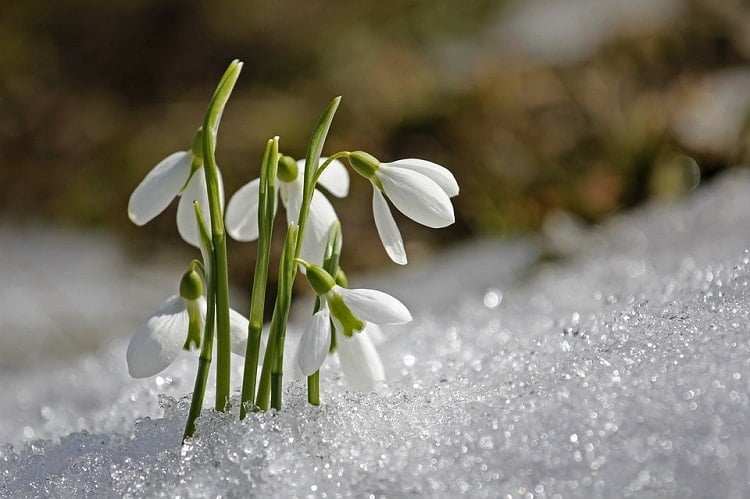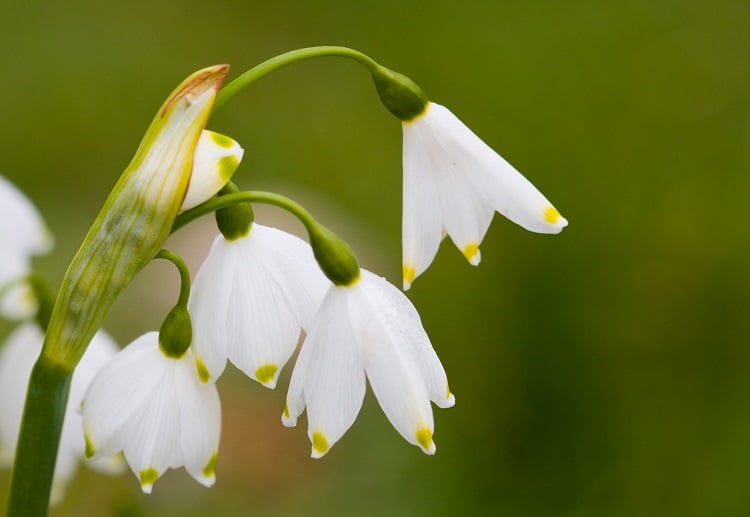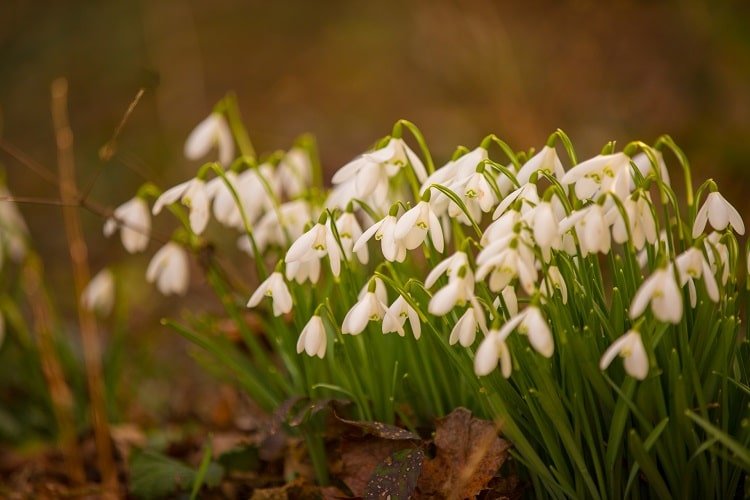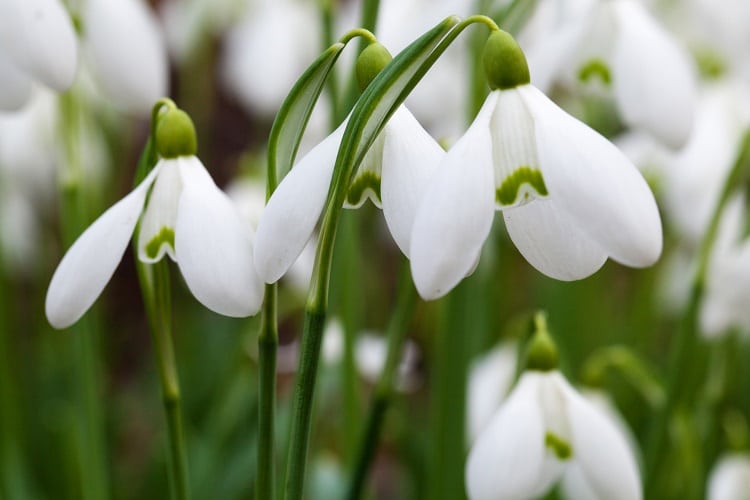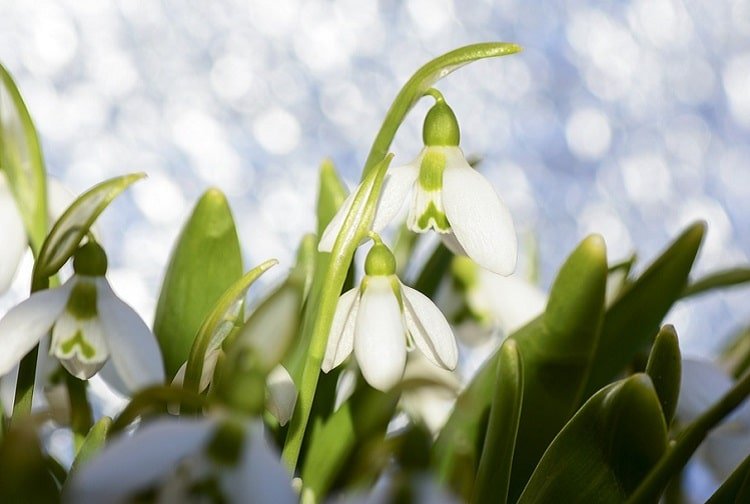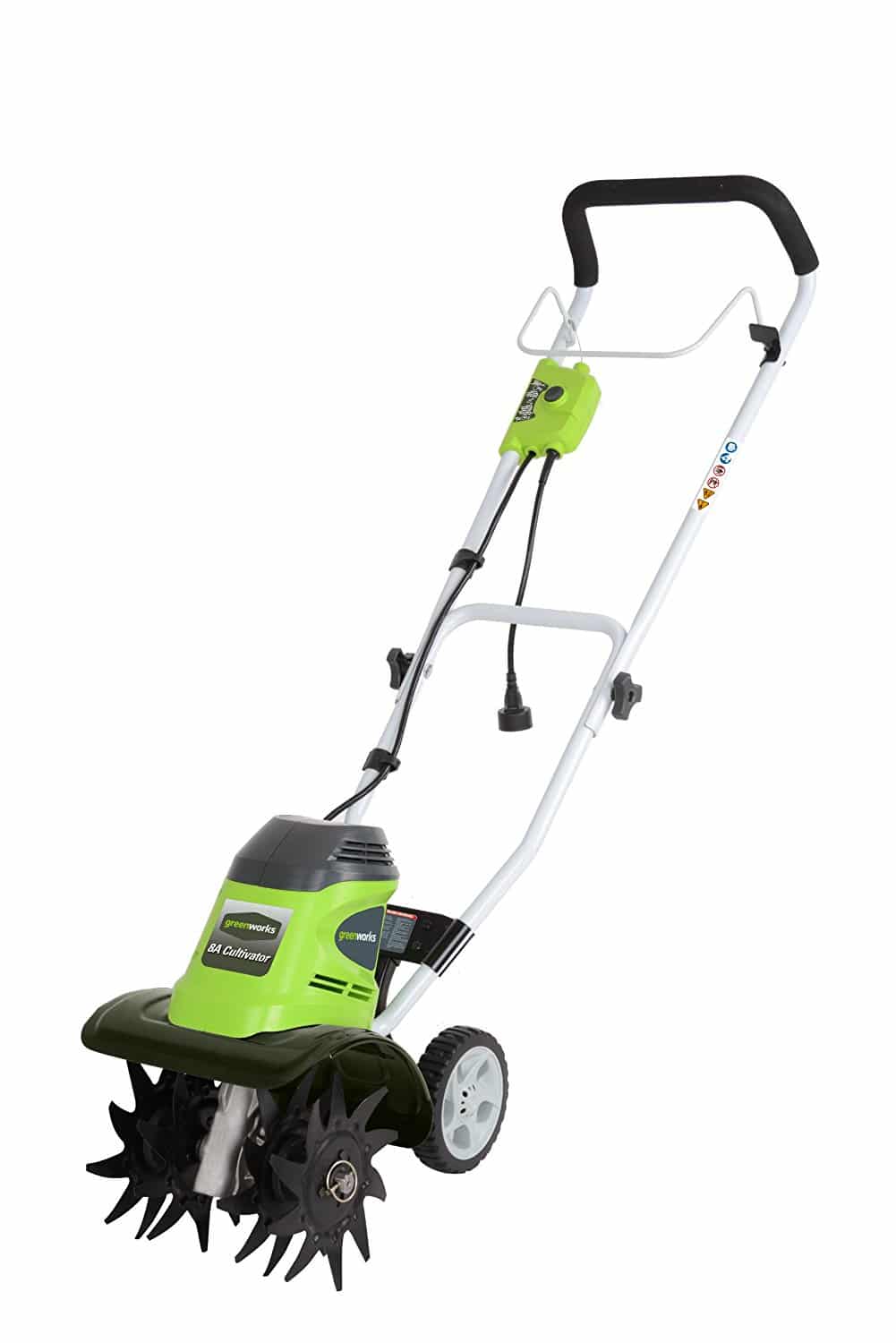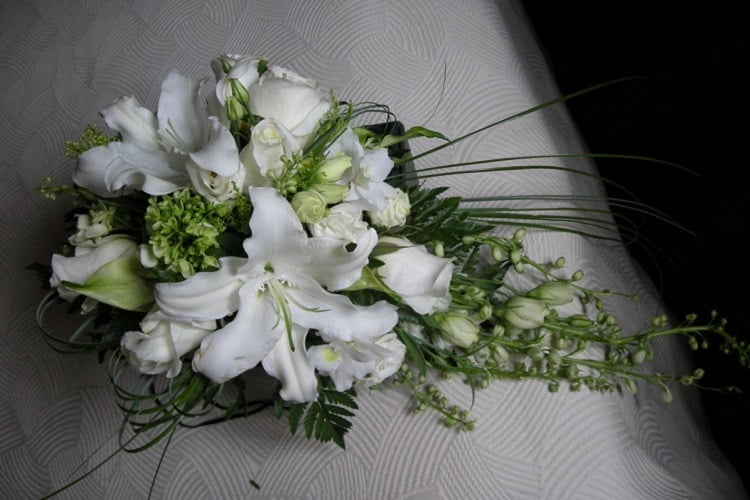Snowdrops are the symbol of the triumph of the spring, as they defy the cold season and bloom even through the thick layer of snow, which brought their name. Some of the plants emerge early in the year, during January, while others are a little late to appear. However, these are the perfect plants if you want something that keeps blooming throughout the entire year. Here is a small guide on how to plant snowdrops.
Snowdrops bulbs
Before planting, you should first pick up the bulbs. When you go out to buy them, you should know that they are often sold fresh, or ‘in the green’. This means they haven’t been dried beforehand, but they might do if you leave them waiting for too long.
In fact, snowdrops bulbs dry out extremely easily, and it won’t be too good for them if you let them dry. As soon as you have purchased the bulbs, you should go on and plant them right away.
What to know about snowdrops flowers
Snowdrops are tough little plants, the first to blossom in a new year. They can emerge even when there’s still snow outside, and start blossoming during winter. You can recognize them from their white petals. There are different breeds of snowdrops, distinguishable from the small marks on the three inner petals. Usually, they are green, but one species has yellow signs.
Snowdrops are nice for any sunny spot in your garden. Also, they can thrive in shadier spots as well, such as under trees, and can easily grow with other plants around them. Therefore, you don’t need special conditions to grow the messenger of spring.
If your garden is struggling with wild animal attacks and pests, you won’t have to worry about snowdrops. Neither big nor small animals are likely to start munching on your white blooms so that they will remain durable. However, once you’ve planted them, you might notice the first harvest won’t be so rich. During the first year, they will flower a little more lightly. Then, the blooms will get more abundant, and the flowers will cover a bigger surface.
How to plant snowdrops
Once you have become familiar with snowdrops and their bulbs, you can get ready for planting. There are a few steps you should follow for your small plantation to become abundant from year to year.
1. Make sure the soil is suitable
Snowdrops like moist soil, but with good drainage. If it is too wet, then the plants won’t be able to grow. If, after rain, the soil remains covered in puddles, it means it is too wet for snowdrops. However, you can still improve its drainage.
You can add about two or three inches of different organic materials, and its draining capacity will get better. There are many options you can choose from, including manure, compost, moss, or ground bark. The quantity of water they need varies from light to moderate.
Apart from the organic material, you can add some fertilizer to speed up the development of the flowers. Then, mix the soil with all these materials until you get a uniform blend. Make sure there are no clumps left.
2. Choose the perfect spot in the garden
Snowdrops can grow quite well in a sunny spot, and some species are happy with full sun shining over them. However, it’s better to have a little shade nearby. Therefore, pick a spot somewhere under a tree. There can be other plants around as well, as snowdrops won’t interfere with their growth. Even the shade cast by your house works well.
Also, plant them someplace where you can see them. During summer, the plants turn dormant, so you should keep them in mind and not dig them up. Also, the leaves will need to perform photosynthesis and secure a new generation of snowdrops.
3. Dig holes and insert the bulbs
Once you have chosen the perfect spot and have prepared the soil, you are ready to start the planting. Dig small holes that are two or three inches deep, three inches apart from each other. Then, insert the bulb with the flat part down, so the pointy part should stay up.
Add water after you’ve covered the bulbs with soil. This way, you will help them start growing roots. Usually, this process starts pretty quickly after the planting is over. However, it might take some time until you see the first traces of the plant above the soil.
4. Get ready for the next generation of snowdrops
The snowdrops will be in full bloom from late winter or early spring, until early summer. Therefore, you don’t have to worry if they will start withering. Let the leaves and flowers until they turn yellow, and then remove whatever looks dried.
This is essential to allow the plants to perform photosynthesis. However, you should be extremely careful. Picking up the withered leaves is necessary, but don’t remove any of the green foliage. If you do this, you will affect the future snowdrops harvest, and you will get fewer flowers next season.
5. Keep the snowdrops alive until the next season
Once summer has passed, you get closer to the moment when snowdrops should bloom again. Throughout autumn and winter, you should help the plants survive. You can do this by choosing a fertilizer that can be dissolved into water, and feeding the plants with it.
The snowdrops can survive even without fertilizing. However, if you want them to be healthier and spread more, this solution will help them thrive.
6. How to expand the snowdrops plantation
Snowdrops are very easy to grow, and can usually multiply on their own. They do not cast their seeds but produce offsets. This means that year after year, a bulb will grow more bulbs that are attached to it. You can let them do their thing, and they will continue multiplying.
However, after growing snowdrops for many years, the mother bulb will get a little too burdened. This is the moment when you should separate them. Before digging them up, the flowers should first fade, but the leaves should remain green. Split the bulbs, and put the original ones back into their holes. Then, plant the other ones in other specially prepared holes, following the steps you should already be familiar with.
7. Plant other flowers around the snowdrops
During summer, the snowdrops will go dormant. This means they will no longer leave any trace at the surface, but the bulbs will continue growing in the soil. This can be tricky, as a bare piece of land in your garden might mislead you.
Learning how to plant snowdrops is not complete if you don’t also learn what to combine them with. This is advisable since other plants growing around them will remind you there are some snowdrops in that soil. This way, you won’t dig them up and ruin the bulbs.
The wintery flowers can thrive under different types of shrubs, like Sibirica for instance. Also, you can plant them next to any herbaceous plants that grow taller and cover them during summer, when they do not get out of the ground. Also, they can grow pretty well in the moss under trees.
8. When should you start planting?
Snowdrops might bloom in late winter, but they should spend some time in the ground to develop roots and get ready to pierce the snow. Also, you should plant them at a moment when the soil is suitable for such activities.
This moment is in early autumn when it’s no longer that hot but the soil is still friendly enough. Then, keep watering and fertilizing them until they emerge in late winter.
Planting in pots
When learning how to plant snowdrops, you should also know they can grow in pots just as well. First of all, you need to pick the perfect container. Any pot you like should do the work, as long as you drill some drainage holes in its bottom. Keep them in a shady place, with some sunlight getting through.
Since you use a pot, you can plant the bulbs a little closer together. If you want, you can add some other plants in the same container. This way, when they will all bloom, you will have a beautiful display of color and blooms. The perfect pot companion for snowdrops is the snow crocus, which is also an early bloomer and a winter warrior.
In fact, the entire planting and caring process is similar to the one you should perform in the soil. However, you might need to replant the snowdrops every year in a different pot and separate the extra bulbs. This way, they won’t get too crowded in a short time.
Summing up
Snowdrops are the symbol of life, warmth, and of the triumph over the cold. They are the first flowers to bloom out of snow, and some of the most long-lasting plants you could add to your garden. If you follow all these steps carefully, you will have your own snowdrops to pluck at the beginning of spring and decorate your house with.





